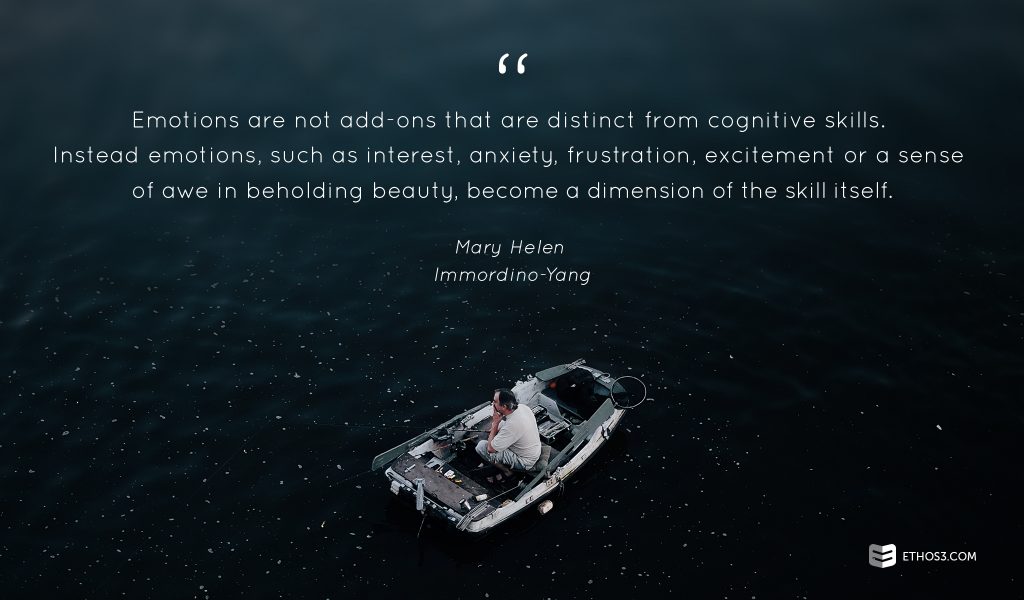When it comes to learning, the greater the emotional connection we have on the topic, the more we are able to effectively learn about it. That’s what some of the newest research on learning has found. Since it is the goal of the presenter to make their audience learn something new, it’s important to know how to do this effectively.
What you will read today is how emotion and education go together, and then how you can apply this to your presentation.
How To Make An Emotional Connection In Your Presentation
Professor and neuroscientist Mary Helen Immordino-Yang explores how big a role emotion plays in learning for students in her book Emotions, Learning, and the Brain: Exploring the Educational Implications of Affective Neuroscience. She found that students were better at learning and remembering information that they had an emotional reaction to. In the past, education has been quick to dismiss emotion as something that’s not important to the learning process. But Immordino-Yang found the opposite. It is vital to create an emotional pull from students in order to help them retain the information. In her Ted Talk, she explains how the teaching should not only be about putting information in the brain. There’s needs to be a greater emphasis on making an emotional connection.
Immordino-Yang shows how an emotional connection to a story increases activity in the brain. This function helps us make personal connections to the information we just heard. In her book, she says there is a reason why two people can hear the same story and have completely different reactions to it. The first reason is because “emotions involve automatic mental and bodily reactions to situations”. So why one person may jump if someone startles them, another may not even flinch. The second reason is because personal experiences teach people how to interpret situations and how to make sense of emotional reactions. So, the better you are at doing something, the more you will admire learning more about it.
“A revolution in neuroscience over the past two decades has overturned early notions that emotions interfere with learning, revealing instead that emotion and cognition are supported by interdependent neural processes. It is literally neurobiologically impossible to build memories, engage complex thoughts, or make meaningful decisions without emotion.” – Mary Helen Immordino-Yang Emotions, Learning, and the Brain: Exploring the Educational Implications of Affective Neuroscience
Learning can cause changes to our emotional state. For a subject we feel confident about, we tend to have an easier and enjoyable time learning it. But for a subject we are unsure about, we tend to worry and stress over it. This is what psychologist Stephanie Lichtenfeld found in her study. She tracked 520 students in 31 schools from 2nd grade to 4th grade. She found that as students advance in elementary school, their emotional response to going to school changes. For example, when students are in 2nd grade, they have a positive emotional response to going to math class. But as the math gets more complex, and depending on the student’s strength in the class, emotions like anxiety can set in. By the time the students were in 4th grade, their attitude towards learning was negative.

To dismiss emotions as something getting in the way of the learning process would be a mistake for a teacher to make. Humans are emotional, and that trait never goes away. As a presenter, it is important to tap into your audience’s emotions in order to ensure they walk away learning something new.
How To Tap Into Your Audience’s Emotions
Storytelling is your safest bet when it comes to creating an emotional response. Immordino-Yang puts this to use in her TED Talk. She tells the story of a girl from Sudan who watched her mother die during childbirth. Since the girl could not go to school and there was not a doctor nearby to help, the girl was helpless; but she became determined to educate herself and become a doctor. Her goal was to teach other girls how to help women during childbirth. After helping a British family while they visited her country, she had the opportunity to leave everything behind and go to school. She did, and she became a doctor and returned to Sudan to fulfill her dream. Immordino-Yang shows use MRI scans of people who heard that story and felt inspired. It lit up cognitive regions of the brain.
Storytelling is a cognitive tool. Other tools include metaphors, humanization, and mental imagery. These can all be applied to your presentation. Themes are a great way to structure a presentation. Metaphors can be easy to remember and create definitive connections. Mental imagery is always important to incorporate into presentations. All these tools put the brain at work and help the audience make an emotional connection to your presentation. In turn, this will help your message become more durable with time.
So, as you prepare for your next presentation, keep emotions in mind. The sure fire way to get that emotional connection is through storytelling. It can be as inspirational as the girl from Sudan, or as relatable as day-to-day activities. Either way, do not think you can get away with avoiding emotions if you want your presentation to make a lasting impression.
More from the Ethos3 Blog:
The 5 Elements of Storytelling
The Science of Storytelling for Presenters [Infographic]